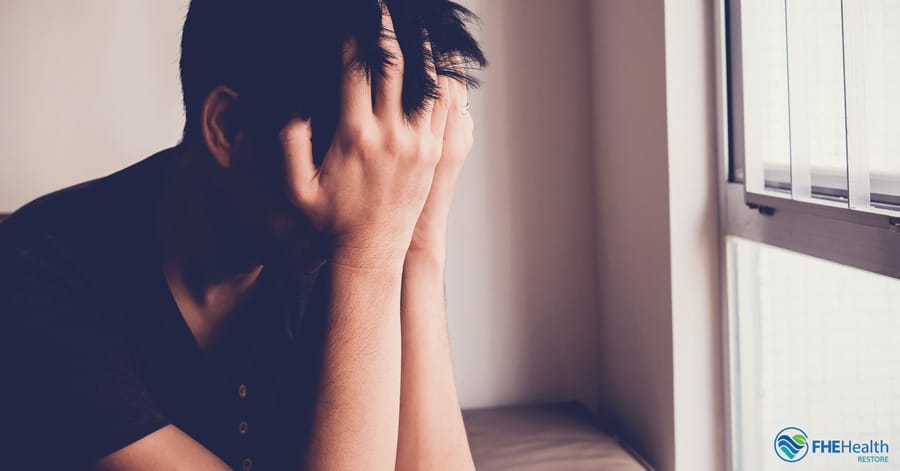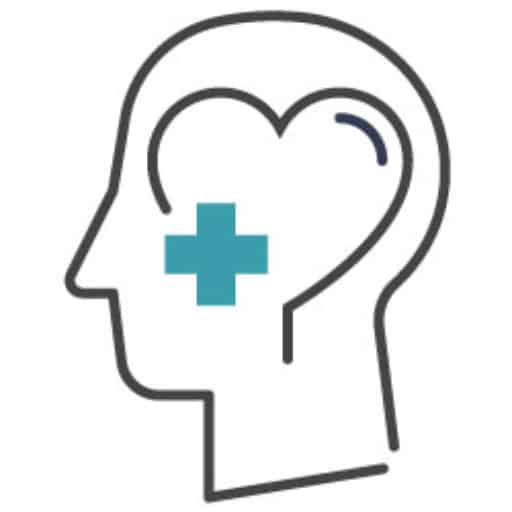According to the National Center for PTSD, around 6 out of every 100 Americans will have symptoms of post-traumatic stress disorder (PTSD) at some point in their lives. Although awareness about this mental health disorder has increased in recent years, many people still don’t fully understand its causes or what living with PTSD is like. If someone you love is dealing with the condition, knowing about PTSD can help you better support them.
What Is PTSD?
PTSD is a mental health condition that can develop after a person lives through a traumatic event. But while half of all American adults experience some sort of trauma during their lifetime, most people don’t develop PTSD as a result. Although research into why some individuals experience PTSD and others don’t is ongoing, the condition seems to stem from the lingering effects of our body’s fight-or-flight response, meant to protect us in times of danger.
When humans face death or serious injury, the body releases the hormone adrenaline, which raises blood pressure and increases heart and respiration rates. In people with PTSD, adrenaline levels often remain elevated long after the traumatic event, and changes in the brain may take place.
What Can Trigger PTSD?
Being involved in or witnessing a life-threatening event, such as an assault, car accident or natural disaster, may trigger PTSD. Individuals whose jobs routinely include seeing or hearing such events may also get PTSD.
However, no event is too small to cause PTSD. A serious medical diagnosis, difficult childbirth experience or losing a loved one can trigger the condition. Some people develop PTSD after a family member or close friend experiences trauma, even if they didn’t witness it.
Someone living with PTSD can’t simply snap out of it or get over it. In fact, suggesting they can is perhaps one of the worst things to do to someone with PTSD. Because a person with PTSD can’t just stop having symptoms, this type of language can be invalidating and result in the individual feeling isolated and ashamed.
What Does PTSD Feel Like When Untreated?
People living with PTSD can have a variety of symptoms, and not everyone will have the exact same experience. The following are some common characteristics and symptoms of the condition.
Reexperiencing the Event
Someone with PTSD may find themselves suddenly back in the moment of their trauma. They may have a mental flashback of what happened, or their body may suddenly go into fight-or-flight mode, resulting in symptoms such as a rapid heartbeat and sweating. Negative feelings unrelated to the event and certain words, situations and objects may cause them to relive the trauma.
In some cases, people with PTSD have intrusive thoughts about their trauma. They may be focused on something else and suddenly remember the event. Then, they may find it difficult to stop thinking about it and return to their previous activity. PTSD can put a person back in their traumatic moment even when they’re asleep. Nightmares are often a part of living with PTSD, and they can lead to insomnia and other sleep problems.
Avoidance
The extreme distress of reexperiencing trauma can cause a person with PTSD to withdraw from others. They may go to great lengths to avoid situations, objects or places that remind them of their trauma. For example, someone who develops PTSD after an auto accident may stop driving or refuse to get into a car again. In some cases, avoidance gets in the way of a person’s ability to work or perform other daily living tasks.
Hypervigilance and Reactivity
Many people with PTSD feel as if they’re on alert all the time. They may be tense or guarded or put so much effort into observing their surroundings that they can’t concentrate on tasks. Due to their heightened state, they may startle easily.
PTSD can also make a person more reactive. They may respond to minor inconveniences or stresses with an inappropriate level of anger or be generally irritable. In extreme cases, PTSD can cause aggression, but having the mental health disorder doesn’t necessarily make a person more prone to violence.
And while PTSD can cause a person to avoid potential dangers, it can also have the opposite effect. Some individuals with the condition may act recklessly, take unnecessary risks and exhibit destructive behaviors.
Effects on Mood and Thinking
Symptoms of depression are often a part of living with PTSD. A person might lose interest in activities they once enjoyed, have low self-esteem or feel numb or hopeless. They may easily feel negative emotions, such as anger and fear, but find it difficult to experience positive ones like contentment or joy.
A person with PTSD may not remember the specific details and key moments of their trauma clearly, even though they can relive how they felt during the event. They may have distorted thoughts about what happened and blame themselves or others unjustly.
What Is PTSD Like When Treated?
Talk therapy and other treatments may help people with PTSD. Therapy allows people to explore their trauma and understand how it continues to affect their daily lives. They can learn relaxation and anger management techniques and get in touch with feelings like guilt and shame. In some cases, doctors may prescribe medications to ease symptoms like poor sleep, nightmares, sadness and anxiety.
With treatment, someone living with PTSD may experience fewer symptoms or have less intense reactions than they once did. When symptoms do arise, they’re in a better position to cope with them. Over time, treatment can improve mood and thinking, making a person less avoidant and reactive. And although they can’t completely erase the memory of what happened, treatment can make it possible for a person to focus more on setting goals for the future and moving on from their trauma.
Treatment for Those Living With PTSD
Living with PTSD can be difficult, but you don’t have to suffer the symptoms alone. With a customized treatment plan, you can address past trauma in a safe environment and learn coping strategies to help you live a fuller life despite PTSD symptoms. Our team of professionals at Restore is here to help you take the first step toward recovery. Contact us today to learn more about our PTSD treatment options.



